Abstract
In order to investigate linkage detection strategies for genetically complex traits, multilocus models of inheritance need to be specified. Here, two types of multilocus model are described: (1) a multiplicative model, representing epistasis (interaction) among loci, and (2) an additive model, which is shown to closely approximate genetic heterogeneity, which is characterized by no interlocus interaction. A ratio lambda R of risk for type R relatives that is compared with population prevalence is defined. For a single-locus model, lambda R - 1 decreases by a factor of two with each degree of relationship. The same holds true for an additive multilocus model. For a multiplicative (epistasis) model, lambda R - 1 decreases more rapidly than by a factor of two with degree of relationship. Examination of lambda R values for various classes of relatives can potentially suggest the presence of multiple loci and epistasis. For example, data for schizophrenia suggest multiple loci in interaction. It is shown in the second paper of this series that lambda R is the critical parameter in determining power to detect linkage by using affected relative pairs.
Full text
PDF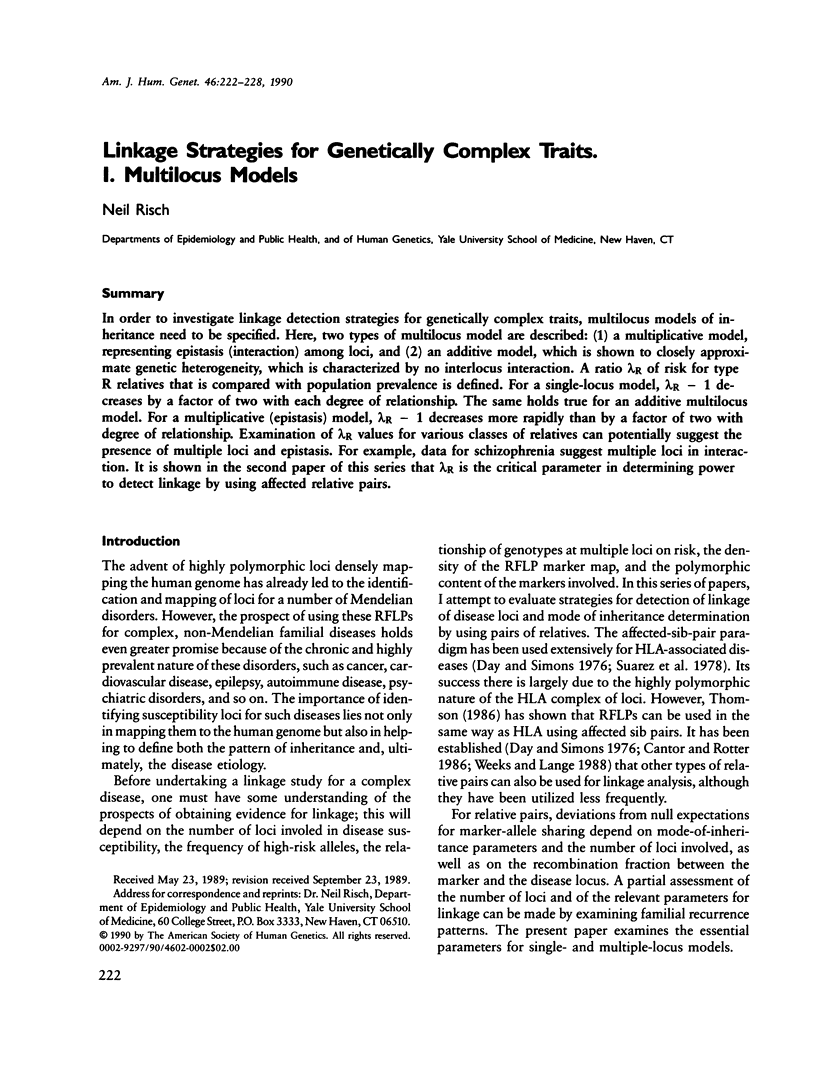
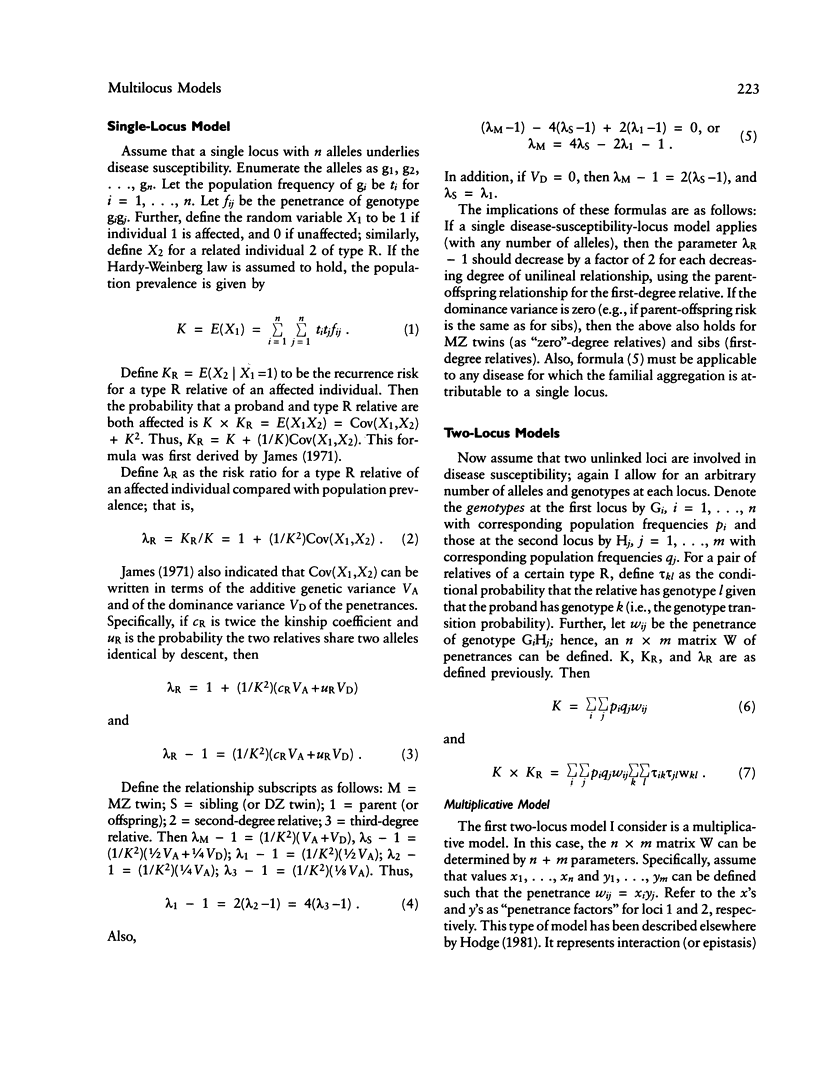
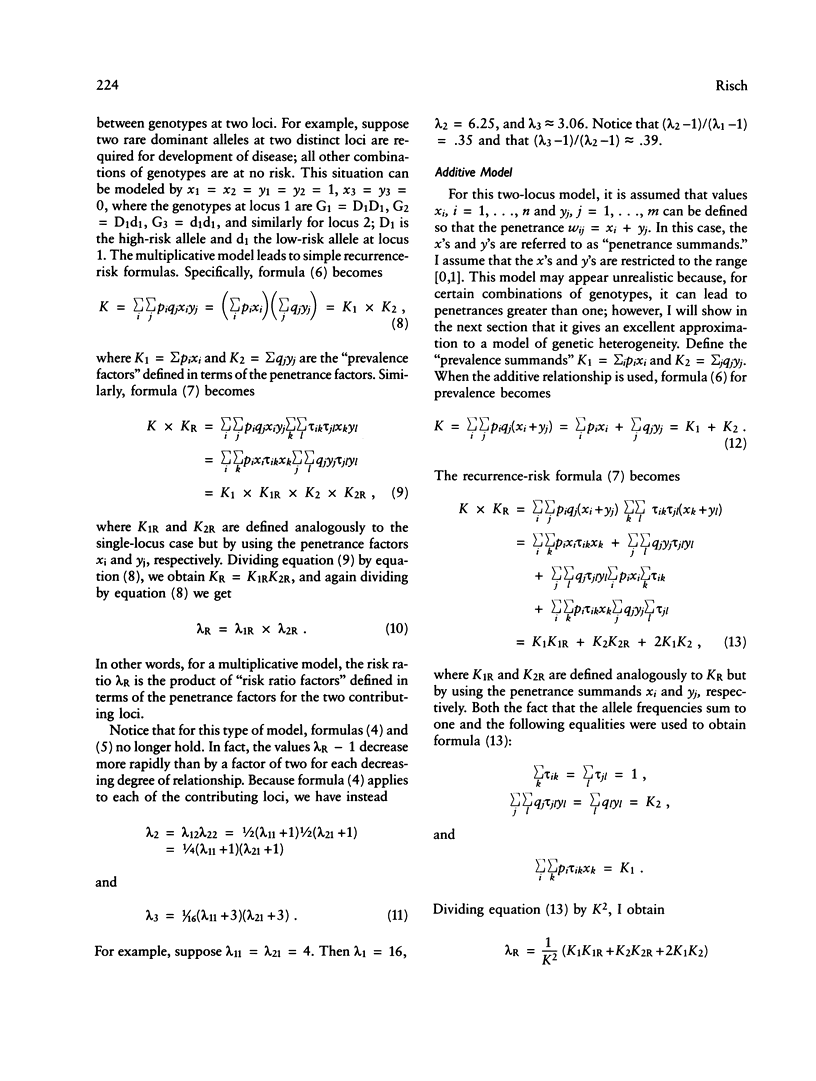
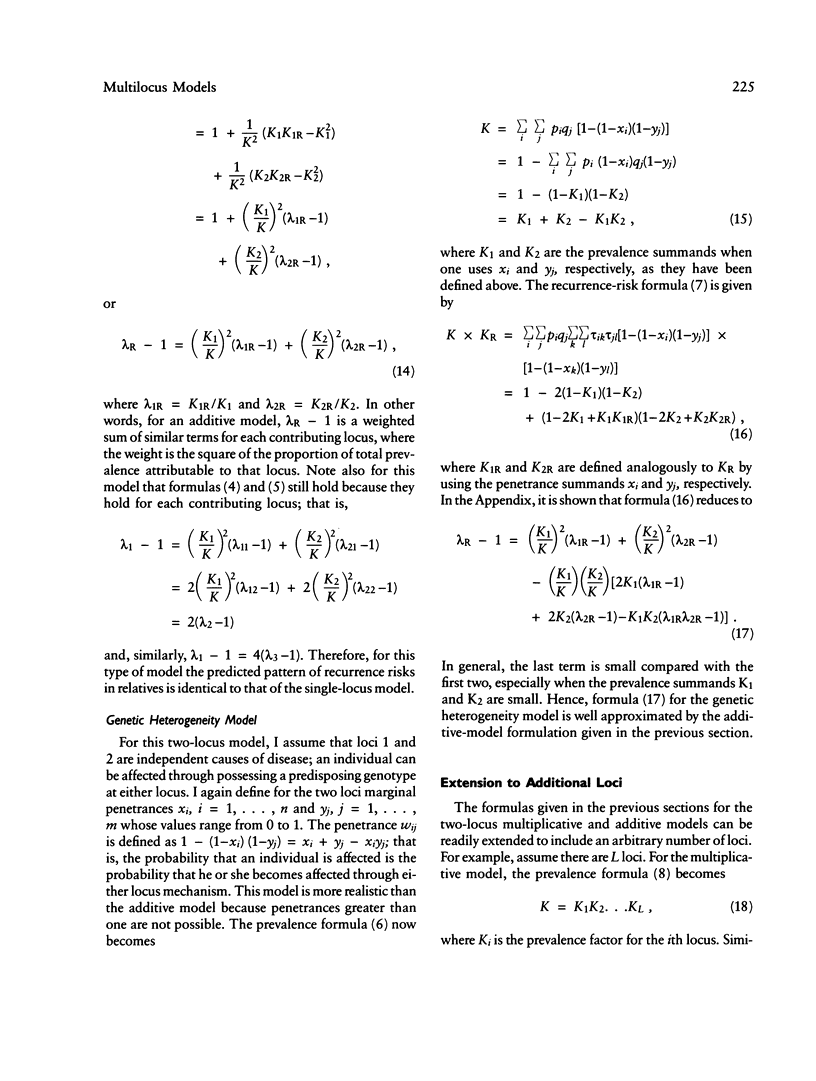
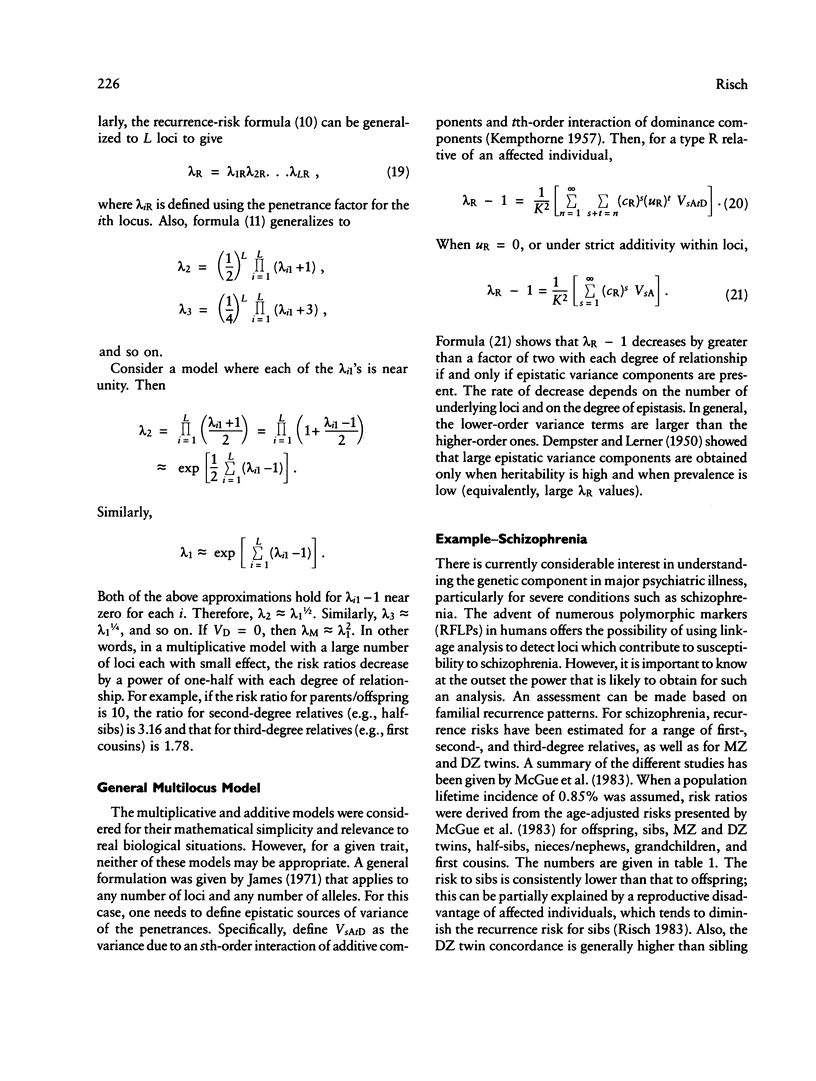
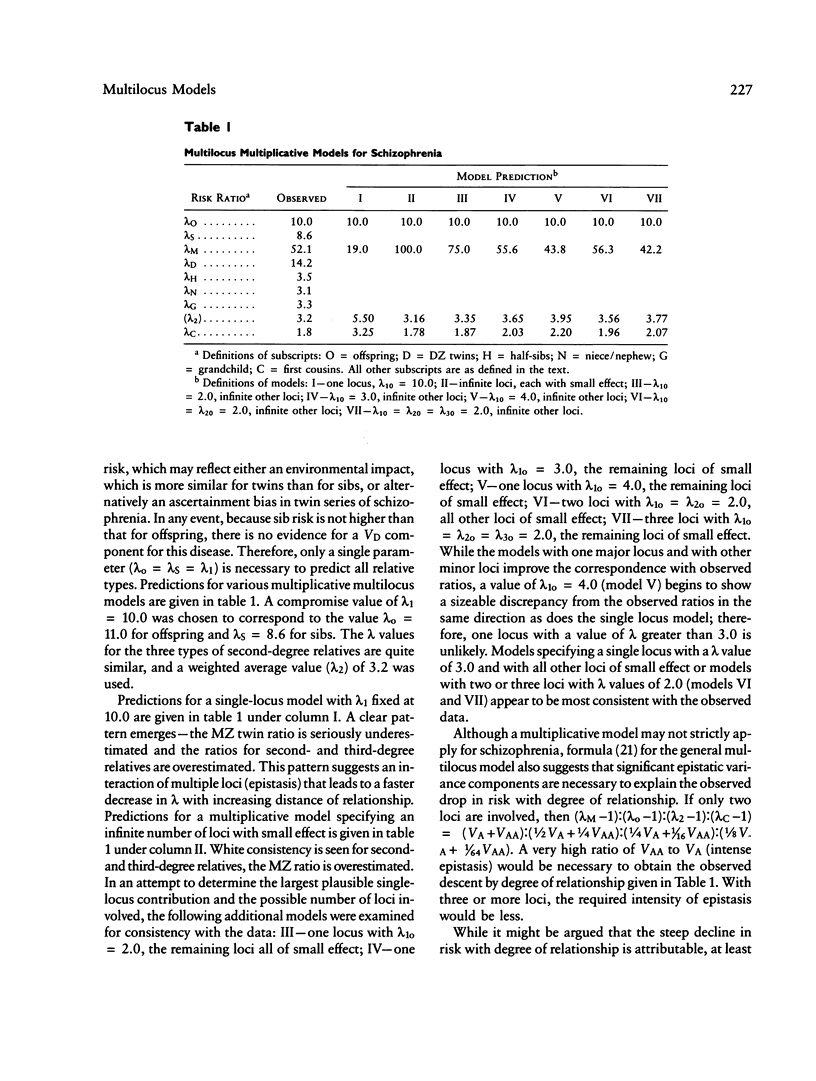
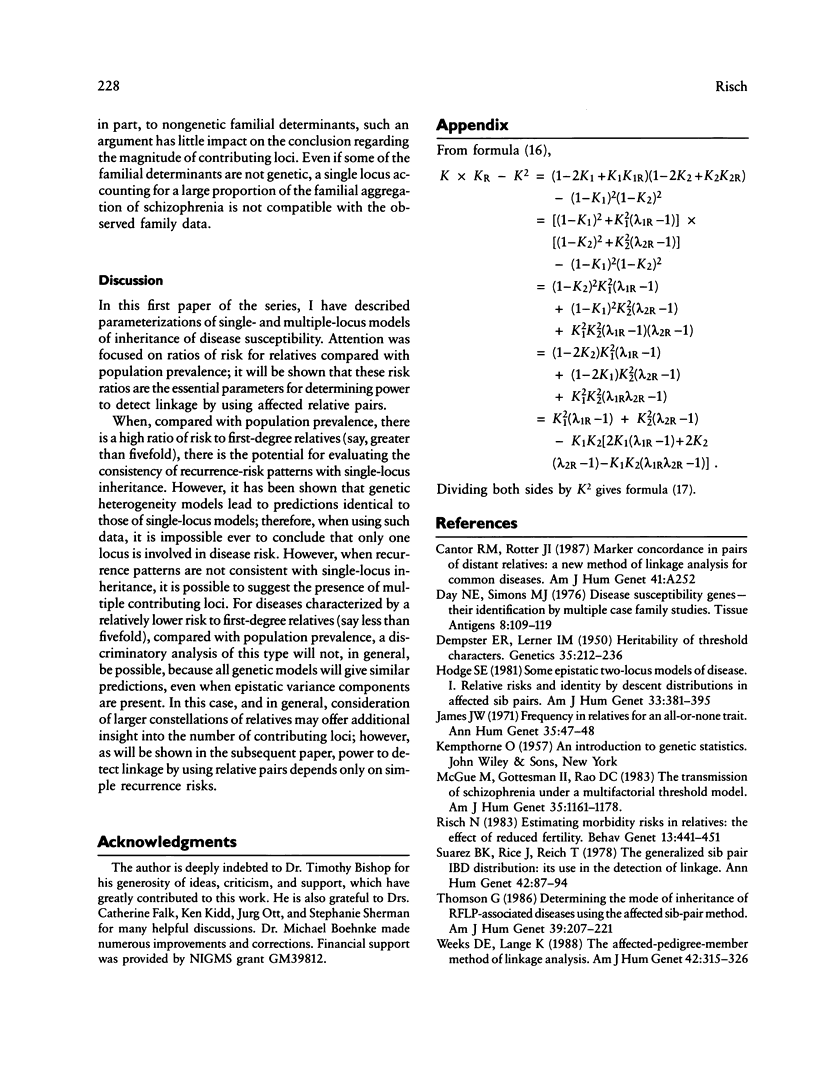
Selected References
These references are in PubMed. This may not be the complete list of references from this article.
- Day N. E., Simons M. J. Disease susceptibility genes--their identification by multiple case family studies. Tissue Antigens. 1976 Aug;8(2):109–119. [PubMed] [Google Scholar]
- Dempster E. R., Lerner I. M. Heritability of Threshold Characters. Genetics. 1950 Mar;35(2):212–236. doi: 10.1093/genetics/35.2.212. [DOI] [PMC free article] [PubMed] [Google Scholar]
- Hodge S. E. Some epistatic two-locus models of disease. I. Relative risks and identity-by-descent distributions in affected sib pairs. Am J Hum Genet. 1981 May;33(3):381–395. [PMC free article] [PubMed] [Google Scholar]
- James J. W. Frequency in relatives for an all-or-none trait. Ann Hum Genet. 1971 Jul;35(1):47–49. doi: 10.1111/j.1469-1809.1956.tb01377.x. [DOI] [PubMed] [Google Scholar]
- McGue M., Gottesman I. I., Rao D. C. The transmission of schizophrenia under a multifactorial threshold model. Am J Hum Genet. 1983 Nov;35(6):1161–1178. [PMC free article] [PubMed] [Google Scholar]
- Risch N. Estimating morbidity risks in relatives: the effect of reduced fertility. Behav Genet. 1983 Sep;13(5):441–451. doi: 10.1007/BF01065920. [DOI] [PubMed] [Google Scholar]
- Suarez B. K., Rice J., Reich T. The generalized sib pair IBD distribution: its use in the detection of linkage. Ann Hum Genet. 1978 Jul;42(1):87–94. doi: 10.1111/j.1469-1809.1978.tb00933.x. [DOI] [PubMed] [Google Scholar]
- Thomson G. Determining the mode of inheritance of RFLP-associated diseases using the affected sib-pair method. Am J Hum Genet. 1986 Aug;39(2):207–221. [PMC free article] [PubMed] [Google Scholar]
- Weeks D. E., Lange K. The affected-pedigree-member method of linkage analysis. Am J Hum Genet. 1988 Feb;42(2):315–326. [PMC free article] [PubMed] [Google Scholar]


